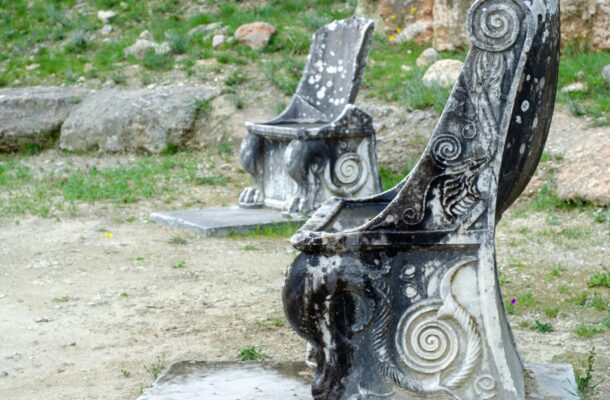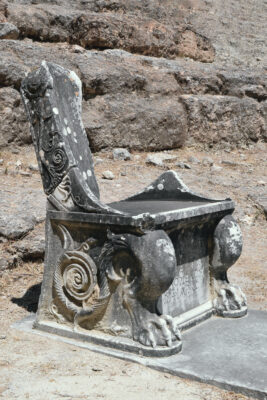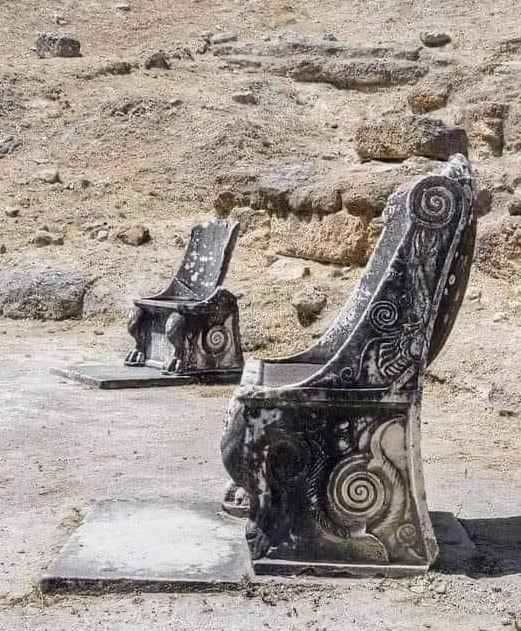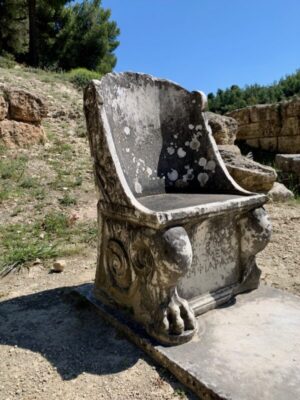The marble thrones Amphiareion in Greece, particularly those found at ancient sites like the Amphiareion of Oropos, are remarkable relics that reflect the grandeur of Greek civilization. These intricately carved seats, known as prohedria, were often reserved for distinguished individuals, such as priests or officials, during theatrical or ceremonial events.
Made from fine marble, these thrones not only symbolize social hierarchy but also showcase the artistic and architectural prowess of ancient Greek craftsmen. Today, these historical artifacts stand as enduring symbols of the cultural and spiritual significance of ancient Greece, captivating visitors from around the world. Let’s explore archeology.dulichvn.net the history and enduring legacy of these fascinating ancient artifacts.

History of the Marble Thrones Amphiareion
The Amphiareion of Oropos was a sacred destination for pilgrims over 2,000 years ago, serving as both a sanctuary and a center for healing.
1. A Sanctuary for Amphiaraos
The site was dedicated to Amphiaraos, a revered hero and seer in Greek mythology. Pilgrims traveled here seeking oracles and cures for their ailments.
2. A Pilgrimage Destination
Renowned as a healing center, the sanctuary attracted visitors from all over Greece, making it a hub of spiritual and cultural activity.
3. Archaeological Importance
The site’s ruins, including its marble thrones and theater, offer invaluable insights into ancient Greek religious practices and daily life.
Architectural Highlights
The Amphiareion showcases impressive structures, reflecting the architectural and cultural sophistication of its time.
1. The Stoa – A Healing Center
The largest structure in the sanctuary, the stoa, dates back to the mid-4th century BC. It served as an enkoimeterion, where patients rested in hopes of receiving divine visions for their treatment.
2. The Theatre
Constructed in the 2nd century BCE, the theater featured wooden seating supported by stone. It was likely used for rituals, performances, and gatherings, adding a communal aspect to the sanctuary’s purpose.
3. The Marble Thrones
Among the most remarkable finds are five marble prohedria—honorary seats placed in front of the theater’s orchestra. These intricately carved thrones were reserved for prominent individuals, highlighting the social hierarchy of the time.

Visiting the Amphiareion Today
The site offers a fascinating glimpse into ancient Greek culture and remains a compelling destination for history enthusiasts.
1. Explore Ancient Ruins
Visitors can walk among the remnants of the stoa, theater, and other structures, immersing themselves in the sanctuary’s storied past.
2. Marvel at the Marble Thrones
The beautifully preserved prohedria are a must-see, showcasing the artistry and significance of honorary seating in ancient Greece.
3. Connect with History
A visit to the Amphiareion provides an opportunity to reflect on the spiritual and communal life of ancient Greeks, offering a deeper appreciation for their enduring legacy.
See more: The Abandoned City of Thamugadi A Roman Mystery
Conclusion
The Amphiareion of Oropos stands as a testament to the rich history and cultural achievements of ancient Greece. From its sacred marble thrones to its theater and healing center, this sanctuary offers a unique window into the past.



CÁC TIN KHÁC
Mark Twain & Olivia Langdon: A 36-Year Love Story Filled with Laughter and Devotion
The Tollund Man: A 2,400-Year-Old Mystery Preserved in a Danish Bog
Skara Brae: Scotland’s Hidden Neolithic Village
Porta Nigra: The Hidden Depths of Trier’s Iconic Roman Gate